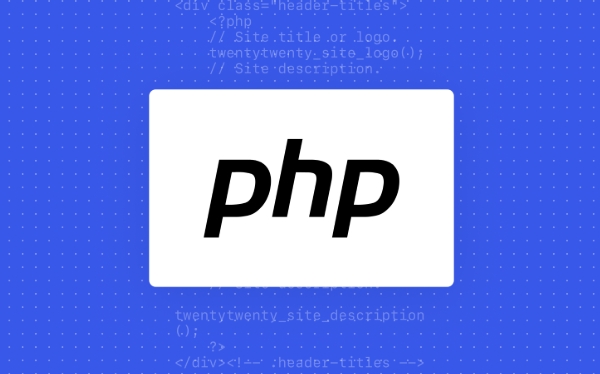 Backend Development
Backend Development
 PHP Tutorial
PHP Tutorial
 Writing Clean File Headers: A Standardized Approach with Multiline Comments
Writing Clean File Headers: A Standardized Approach with Multiline Comments
Writing Clean File Headers: A Standardized Approach with Multiline Comments
Jul 25, 2025 am 11:13 AMA well-structured file header improves code readability and collaboration by providing key file information upfront. 1. Include the file’s purpose, author, creation and modification dates, version, license, dependencies, and optional notes. 2. Use a consistent multiline comment format like / ... / in languages such as JavaScript, C, or Java, or triple quotes in Python. 3. Keep descriptions concise, update the modified date regularly, maintain uniform formatting, avoid redundant version control data, and automate headers using IDE templates. 4. Avoid excessive detail, outdated metadata, inconsistent style, and partial usage across files. Adopting this standardized approach ensures clarity, professionalism, and long-term maintainability in shared codebases.

Writing clean, consistent file headers is a simple yet powerful way to improve code readability, maintainability, and team collaboration. A well-structured header gives developers immediate context about a file’s purpose, authorship, and history—without having to dig into the code or version control. Using multiline comments for this purpose ensures the header stays with the file across environments and tools.

Here’s a standardized approach to writing clean file headers using multiline comments.
? Purpose of a File Header
A file header isn’t just documentation—it’s a quick reference that answers key questions:

- What does this file do?
- Who wrote it or last modified it?
- When was it created or updated?
- Are there dependencies, licenses, or special instructions?
Including this information upfront reduces confusion, especially in shared or long-lived projects.
? Standard Structure Using Multiline Comments
Use a consistent format across your codebase. Here’s a recommended template using multiline comments (syntax may vary slightly by language):

/* * =================================================== * File: [filename.extension] * Description: Brief one or two-line summary of the * file's purpose. * Author: [Your Name / Team Name] * Created: [YYYY-MM-DD] * Modified: [YYYY-MM-DD] * Version: 1.0 * License: [e.g., MIT, Proprietary, etc.] * Dependencies: [List key dependencies if applicable] * Notes: [Optional: usage instructions, known * issues, or context not obvious in code] * =================================================== */
Example in JavaScript:
/* * =================================================== * File: userAuth.js * Description: Handles user authentication including * login, logout, and token validation. * Author: Alex Rivera * Created: 2024-03-15 * Modified: 2024-05-20 * Version: 1.2 * License: MIT * Dependencies: jwt, bcrypt, express-session * Notes: Requires environment variables for * secret keys. See config/.env.example. * =================================================== */
This format works in most languages that support /* ... */ style comments (JavaScript, C, C , Java, PHP, etc.). For Python, adapt it using triple quotes:
"""
===================================================
File: user_auth.py
Description: Handles user authentication including
login, logout, and token validation.
Author: Alex Rivera
Created: 2024-03-15
Modified: 2024-05-20
Version: 1.2
License: MIT
Dependencies: jwt, bcrypt, flask-session
Notes: Requires environment variables for
secret keys. See config/.env.example.
===================================================
"""? Best Practices
To keep headers useful and not burdensome:
- Keep descriptions concise – One or two lines max.
- Update the Modified date – Make it part of your commit checklist.
- Use consistent formatting – Enforce via linters or team guidelines.
- Avoid redundancy – Don’t duplicate info already in Git (e.g., full change history).
- Automate when possible – Use IDE snippets or file templates to insert headers quickly.
You can create IDE templates (e.g., in VS Code, JetBrains) to auto-generate headers with placeholders for filename, date, and author.
? Common Pitfalls to Avoid
- ? Overloading with too much detail (save deep docs for READMEs or inline comments).
- ? Forgetting to update the modification date or version.
- ? Inconsistent casing, spacing, or comment delimiters across files.
- ? Using headers only in some files but not others—consistency is key.
A clean file header is like a name tag at a conference: small, but instantly informative. By adopting a standardized multiline comment format, you make your codebase more professional, navigable, and collaborative.
Basically, it’s a small habit that pays off in clarity over time.
The above is the detailed content of Writing Clean File Headers: A Standardized Approach with Multiline Comments. For more information, please follow other related articles on the PHP Chinese website!

Hot AI Tools

Undress AI Tool
Undress images for free

Undresser.AI Undress
AI-powered app for creating realistic nude photos

AI Clothes Remover
Online AI tool for removing clothes from photos.

Clothoff.io
AI clothes remover

Video Face Swap
Swap faces in any video effortlessly with our completely free AI face swap tool!

Hot Article

Hot Tools

Notepad++7.3.1
Easy-to-use and free code editor

SublimeText3 Chinese version
Chinese version, very easy to use

Zend Studio 13.0.1
Powerful PHP integrated development environment

Dreamweaver CS6
Visual web development tools

SublimeText3 Mac version
God-level code editing software (SublimeText3)
 How Modern IDEs Transform PHP Comments into Navigational Tools
Jul 25, 2025 am 04:43 AM
How Modern IDEs Transform PHP Comments into Navigational Tools
Jul 25, 2025 am 04:43 AM
PHPDoccommentsprovidetypehints,enableautocomplete,detecterrors,andsupportnavigationinIDEsbyactingasstructuredmetadata.2.Specialinlinecommentslike//TODOor//FIXMEareparsedintoactionabletasks,allowingdeveloperstonavigate,filter,andtrackworkdirectlyfromt
 Multiline vs. Single-Line Comments: A Strategic Guide for PHP Developers
Jul 27, 2025 am 04:33 AM
Multiline vs. Single-Line Comments: A Strategic Guide for PHP Developers
Jul 27, 2025 am 04:33 AM
Single-line comments (//) are suitable for short, local instructions or debugging, 1. Use // for in-line comments or temporarily disable code; 2. Use // for multi-line comments to provide detailed descriptions of complex logic or comment large pieces of code; 3. Use /*/ to write PHPDoc to implement structured documents and integrate with the IDE; 4. Avoid comments to be obvious code; 5. Always keep comments updated to ensure comments clearly convey intentions rather than just describe operations, thereby improving code maintainability.
 Writing Clean File Headers: A Standardized Approach with Multiline Comments
Jul 25, 2025 am 11:13 AM
Writing Clean File Headers: A Standardized Approach with Multiline Comments
Jul 25, 2025 am 11:13 AM
Awell-structuredfileheaderimprovescodereadabilityandcollaborationbyprovidingkeyfileinformationupfront.1.Includethefile’spurpose,author,creationandmodificationdates,version,license,dependencies,andoptionalnotes.2.Useaconsistentmultilinecommentformatli
 The Perils of Nested Multiline Comments in PHP
Jul 26, 2025 am 09:53 AM
The Perils of Nested Multiline Comments in PHP
Jul 26, 2025 am 09:53 AM
PHPdoesnotsupportnestedmultilinecomments,andattemptingtonestthemcancauseunexpectedcodeexecutionorparseerrors;thefirst/closestheentirecommentblock,soanycodefollowingit—evenifintendedtobecommented—willbeexecuted,leadingtobugsorfatalerrorswhenfunctionsa
 Mastering the Nuances of PHP Block Commenting
Jul 26, 2025 am 09:42 AM
Mastering the Nuances of PHP Block Commenting
Jul 26, 2025 am 09:42 AM
PHPblockcommentingisessentialfordocumentinglogic,disablingcode,andcreatingstructureddocblocks;1.Use//formulti-linecommentsbutavoidnesting,asitcausesparseerrors;2.Youcansafelyinclude//commentsinside//blocks;3.Alwayscloseblockcommentswith/topreventunin
 Leveraging PHPDoc Blocks for Superior Code Maintainability
Jul 24, 2025 pm 10:25 PM
Leveraging PHPDoc Blocks for Superior Code Maintainability
Jul 24, 2025 pm 10:25 PM
PHPDocsignificantlyenhancesPHPcodemaintainabilityandclarity.1.Itprovidestypeclarityevenwithoutstricttyping,documentingparameters,returnvalues,andpropertieswithprecision.2.Itdescribescomplexreturntypeslikestructuredarrays,nullablevalues,anduniontypes,
 The Unsung Hero: Enhancing Code Clarity with PHP Multiline Blocks
Jul 25, 2025 pm 02:29 PM
The Unsung Hero: Enhancing Code Clarity with PHP Multiline Blocks
Jul 25, 2025 pm 02:29 PM
PHP's Heredoc and Nowdoc are effective tools to improve code readability and maintainability. 1. Heredoc supports variable interpolation, suitable for dynamic content such as HTML or JSON; 2. Nowdoc does not parse variables, suitable for plain text output; 3. Both avoid the confusion of quotation escapes and string splicing, making multi-line strings clearer; 4. When using it, make sure that the end identifier occupies one line and has no front and back spaces; 5. Direct insertion of untrusted data should be avoided to prevent security risks; 6. Code readability can be enhanced through unified naming separators (such as HTML, SQL). Reasonable use can significantly reduce cognitive load and improve development efficiency.
 From Comments to Contracts: The Power of PHPDoc Annotations
Jul 25, 2025 am 04:41 AM
From Comments to Contracts: The Power of PHPDoc Annotations
Jul 25, 2025 am 04:41 AM
PHPDoccommentsarenotjustfordocumentation—theyserveasstructuredmetadatathatenhancecodereliabilityandmaintainability.1)TheyprovidetypehintsbeyondPHP’snativesyntax,allowingprecisedefinitionslikearrayornullabletypes,whichtoolslikePHPStanuseforstaticanaly





